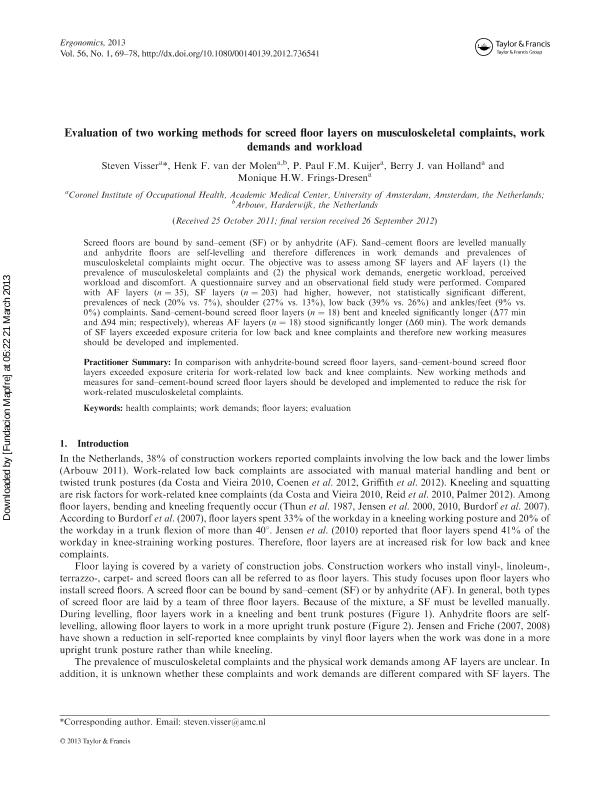Evaluation of two working methods for screed floor layers on musculoskeletal complaints, work demands and workload

Contenido multimedia no disponible por derechos de autor o por acceso restringido. Contacte con la institución para más información.
| Tag | 1 | 2 | Valor |
|---|---|---|---|
| LDR | 00000cab a2200000 4500 | ||
| 001 | MAP20130010144 | ||
| 003 | MAP | ||
| 005 | 20130321173336.0 | ||
| 008 | 130321e20130107esp|||p |0|||b|spa d | ||
| 040 | $aMAP$bspa$dMAP | ||
| 084 | $a875 | ||
| 245 | 0 | 0 | $aEvaluation of two working methods for screed floor layers on musculoskeletal complaints, work demands and workload$cSteven Visser...[et.al] |
| 520 | $aScreed floors are bound by sandcement (SF) or by anhydrite (AF). Sandcement floors are levelled manually and anhydrite floors are self-levelling and therefore differences in work demands and prevalences of musculoskeletal complaints might occur. The objective was to assess among SF layers and AF layers (1) the prevalence of musculoskeletal complaints and (2) the physical work demands, energetic workload, perceived workload and discomfort. A questionnaire survey and an observational field study were performed. Compared with AF layers (n = 35), SF layers (n = 203) had higher, however, not statistically significant different, prevalences of neck (20% vs. 7%), shoulder (27% vs. 13%), low back (39% vs. 26%) and ankles/feet (9% vs. 0%) complaints. Sandcement-bound screed floor layers (n = 18) bent and kneeled significantly longer, whereas AF layers (n = 18) stood significantly longer. The work demands of SF layers exceeded exposure criteria for low back and knee complaints and therefore new working measures should be developed and implemented. | ||
| 773 | 0 | $wMAP20100019818$tErgonomics : the international journal of research and practice in human factors and ergonomics$dOxon [United Kingdom] : Taylor & Francis, 2010-$x0014-0139$g07/01/2013 Volumen 56 Número 1 - enero 2013 , p. 69-78 |

